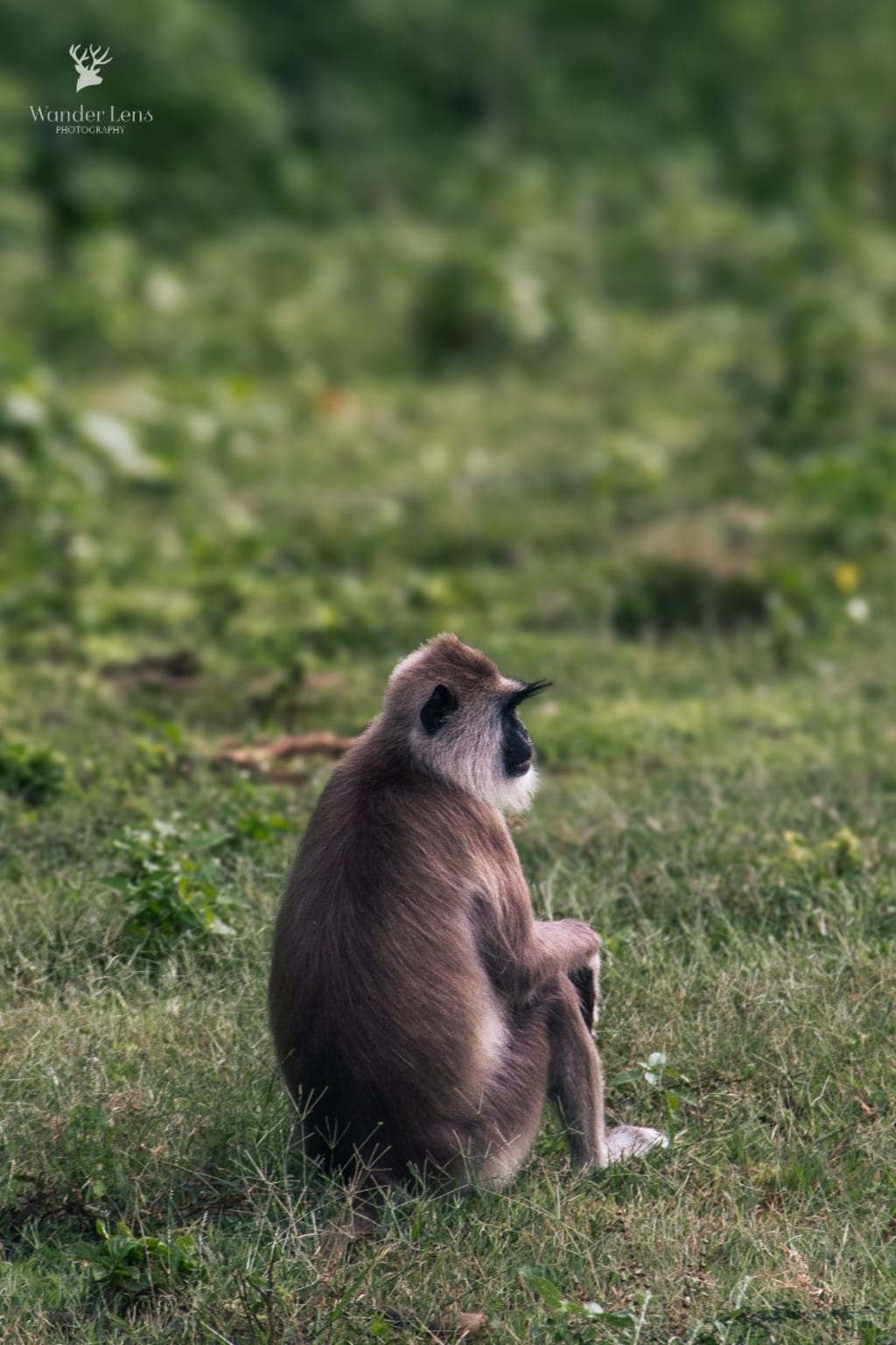The Fascinating World of the Gray Langur at Lunugamwehera-Sri Lanka
Third Eye Capturing

Situated in the central region of Sri Lanka, Lunugamwehera National Park serves as a haven for a remarkable variety of fauna. The Hanuman Langur, or Grey Langur (Semnopithecus entellus), is one of its most fascinating inhabitants. This page explores the fascinating lives of the grey langur, including a thorough analysis of its habitat, behaviour, food, and state of conservation.
Overview of the Grey Langur
One of the primates that is most common in the Indian subcontinent is the grey langur. These monkeys bear the name of Hanuman, the monkey god revered in Hindu mythology and culture and renowned for his tenacity and devotion. The slim bodies, lengthy tails, and characteristic black faces surrounded by a grey fur mane define grey langurs.
Distribution and Habitat
Due to their great adaptability, grey langurs may flourish in a wide range of environments. Typically, they can be found in:
woods: Grey langurs may find all the food and shelter they need in both deciduous and evergreen woods.
Urban Areas: Grey langurs have adapted to living in close proximity to humans in various parts of South Asia, including Sri Lanka.
Semi-Arid Regions: It is also known that these monkeys live in drier regions, where they can make do with few flora and scarce water sources.
These monkeys thrive in Lunugamwehera National Park because of the area's lush forests and plentiful food supplies. They frequently stroll among the trees with grace or forage in the canopy.
Physical attributes
Grey Langurs have a remarkable look that makes them easy to recognise. Important physical attributes consist of:
Size: Adult females weigh from 11 to 15 kilogrammes, but adult males can weigh anywhere from 18 to 26 kilogrammes.
Coloration: They have mostly grey fur with black hands, ears, and face. Their mane, which is formed by the fur surrounding their face, gives them a majestic appearance.
Tail: The Grey Langur's long tail, which may reach the length of its body, is one of its most defining characteristics. The monkey's tail is usually kept in a distinctive upward curve while it is at rest.
Social Organisation and Conduct
Living in groups, grey langurs display intricate social dynamics, making them extremely gregarious animals. Generally, their social system is set up like this:
Troops: Depending on the resources available, a troop may consist of 10 to 60 people. These troops are typically made up of both male and female members, with a dominating male serving as the group's leader.
Within the troop, there is a well-defined hierarchy. In addition to having the right to procreate, the dominant male is in charge of defending the group against intruders and other males.
Langurs communicate by a range of vocalisations, body postures, and facial gestures. Typical vocalisations consist of alarm calls, hoots, and grunts.
Due to their diurnal nature, grey langurs are active during the day. They occupy a large amount of time grooming, socialising, and foraging. Maintaining hygiene and establishing social ties within the group are two important goals of grooming.
Food and Grazing
Grey langurs are largely herbivorous monkeys, meaning that the majority of their diet consists of plants. They eat the following foods:
Leaves: They eat a range of leaves from various plant species, which supply vital fibre and nutrients.
Fruits: During the fruiting season, when they are easily accessible, fruits play a vital role in their diet.
Flowers: Rich in nectar, flowers can be a valuable food source for langurs. They also eat on them.
Bark and Seeds: They may turn to consuming bark and seeds when food is scarce.
Conflicts may arise because Grey Langurs have been observed to feed on human food and browse in trash cans in urban settings. But in the unspoiled setting of Lunugamwehera National Park, they are dependent on the forest's natural richness.
Lifespan and Reproduction
Grey langurs have fascinating reproductive habits that are essential to their survival. Important elements consist of:
Breeding Season: While breeding can take place all year round, it frequently peaks at particular periods due to environmental influences.
Gestation and Birth: A grey langur gives birth after about 200 days of gestation. Most often, females give birth to a single child, though twins can also happen.
Infant Care: While mothers are the primary carers for newborns, other female troop members may also show their affection to them; this practice is referred to as "allomothering."
In the wild, grey langurs can live for 20 to 30 years. A number of things, including human involvement, food availability, and predators, affect how long they live.
Threats and the State of Conservation
According to the IUCN Red List, the grey langur is now classified as "Least Concern," meaning that there is no immediate threat to its extinction. Nonetheless, a number of elements continue to endanger their populations:
Habitat Loss: As a result of urbanisation and deforestation, their natural habitats are being destroyed, bringing them closer to people.
Human-Wildlife Conflict: Langurs may raid crops and forage on trash in urban areas, which can lead to conflicts with people. Occasionally, they are taken prisoner, moved, or even killed.
Road Accidents: The rise in infrastructure and human activity has led to an increase in the number of road accidents involving langurs.
In Lunugamwehera National Park, conservation initiatives are concentrated on protecting the natural ecosystem and reducing conflicts between people and wildlife. Encouraging coexistence and educating the local community about the significance of these primates are crucial measures in guaranteeing their survival.
In summary
One amazing animal that is essential to the environments it lives in is the grey langur. A glimpse into these monkeys' intricate social structures, feeding habits, and interactions with their surroundings can be obtained by watching them in Lunugamwehera National Park. Their capacity for adaptation and resiliency attests to their continued existence in the wild.
Please like and follow Wander Lens Photography if you liked this article. There will be more breathtaking animal images soon. We value your feedback and encouragement, which enables us to keep up our work capturing and promoting nature's beauty.
About the Creator
Digital Wealth Hub
Discover the secrets to online wealth! We share the latest trends, tips, and tools for making money with digital products and services. Join our community of online entrepreneurs.
Enjoyed the story? Support the Creator.
Subscribe for free to receive all their stories in your feed. You could also pledge your support or give them a one-off tip, letting them know you appreciate their work.






Comments
There are no comments for this story
Be the first to respond and start the conversation.